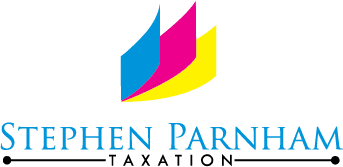The Chancellor has asked the Office of Tax Simplification (OTS) to undertake a review of capital gains tax (CGT) and aspects of the taxation of chargeable gains, in relation to individuals and smaller businesses.
In his letter commissioning the review, which will take a mere three months, Rishi Sunak said he wanted the OTS to identify and offer advice about opportunities to simplify the taxation of chargeable gains, to ensure the system is fit for purpose and makes the experience of those who interact with it as smooth as possible.
Sunak wrote: ‘This review should identify opportunities relating to administrative and technical issues as well as areas where the present rules can distort behaviour or do not meet their policy intent.’
‘In particular, I would be interested in any proposals from the OTS on the regime of allowances, exemptions, reliefs and the treatment of losses within CGT, and the interactions of how gains are taxed compared to other types of income.’
The OTS has touched on aspects of CGT and the taxation of chargeable gains in some previous reports, but this will be its first in-depth analysis.
Areas for consideration include the overall scope of the tax and the various rates which can apply; the reliefs, exemptions and allowances which can apply, and the treatment of losses; the annual exempt amount and its interactions with other reliefs; the position of individuals, partnerships and estates in administration, and of unincorporated businesses and stand-alone owner-managed trading or investment companies; and interactions with other parts of the tax system such as income tax, capital allowances, stamp taxes and inheritance tax, including potentially different definitions for similar transactions/events.
The review will also consider a number of technical issues, including clearance and claims procedures; chargeable gains on shares and securities, including holdings of listed shares; the acquisition and disposal of property; the practical operation of principal private residence relief; consideration of the issues arising from the boundary between income tax and capital gains tax in relation to employees; and valuations, record-keeping, calculating any tax payable and making returns, including claiming losses.
The OTS has set up an online survey and says it wants to hear directly from individuals and businesses as well as professional advisers and representative bodies about which aspects of CGT are particularly complex and hard to get right, and to hear any suggestions for improvements.
The call for evidence comes in two sections: the first seeks high-level comments on the principles of CGT by 10 August, while the second and primary section of the document invites more detailed comments on the technical detail and practical operation of CGT by 12 October.
The popular press is currently speculating in terms of increased rates of capital gains tax. That is unlikely to present significant revenue for a number of reasons although it may look like useful ‘window dressing’ for government policy. For those wishing to predict the future in volatile times I would be much more inclined to look at the OTS’s second report which was published in Summer 2019. This contained some radical proposals including that the (much loved?) CGT uplift should be removed for assets passing on death which benefit from IHT reliefs; the surviving spouse or other beneficiaries of those assets receive them at the deceased’s historic base cost. Proposals like this would yield far more revenue in the medium/long term than mere rate changes and would constitute a seismic shift in planning strategies for the future. All existing planning which historically relied on that uplift would need to be reviewed for any legislative changes. For the Chancellor it would be any easy option too. All that would be required is to delete just 14 words from TCGA 1992 s 62(1)(a) and the deed would be done.
Just as radical would be an alignment of CGT rates with those of income tax. Impossible? It wasn’t 55 years ago. Times have changed and relying on comforting myths that the future will pretty much look like the relatively recent past are looking increasingly complacent.


